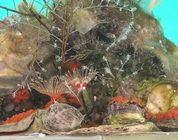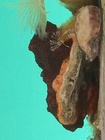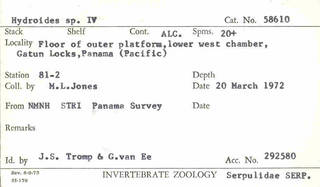RAS taxon details
Hydroides Gunnerus, 1768
129566 (urn:lsid:marinespecies.org:taxname:129566)
accepted
Genus
marine, brackish, fresh, terrestrial
recent only
Gunnerus, J.E. (1768). Om Nogle Norske Coraller. <em>Det Kongelige Norske Videnskabers Selskabs Skrifter.</em> 4: 38-73., available online at http://gdz.sub.uni-goettingen.de/dms/load/img/?PPN=PPN481641912_0004&IDDOC=273812
page(s): 52 [details]
page(s): 52 [details]
RAS (2025). Hydroides Gunnerus, 1768. Accessed at: https://ras.biodiversity.aq/aphia.php?p=taxdetails&id=129566 on 2025-09-11
RAS (Eds.) (2025). Register of Antarctic Species. Hydroides Gunnerus, 1768. Accessed at: https://ras.biodiversity.aq/aphia.php/www.pfeil-verlag.de/04biol/www.pfeil-verlag.de/04biol/aphia.php?p=taxdetails&id=129566 on 2025-09-11
Date
action
by
original description
Gunnerus, J.E. (1768). Om Nogle Norske Coraller. <em>Det Kongelige Norske Videnskabers Selskabs Skrifter.</em> 4: 38-73., available online at http://gdz.sub.uni-goettingen.de/dms/load/img/?PPN=PPN481641912_0004&IDDOC=273812
page(s): 52 [details]
basis of record Kupriyanova, E.; Sun, Y.; Wong, E.; Ten Hove, H. (2023). Hydroides of the World. , available online at https://doi.org/10.1071/9781486311590 [details]
additional source Read, Geoffrey B.; Ten Hove, Harry A.; Sun, Yanan; Kupriyanova, Elena K. (2017). Hydroides Gunnerus, 1768 (Annelida, Serpulidae) is feminine: a nomenclatural checklist of updated names. <em>ZooKeys.</em> 642: 1-52., available online at http://zookeys.pensoft.net/articles.php?id=10443
note: checklist, etymology, type localities [details] Available for editors
additional source Hove, Harry A. ten.; Kupriyanova, Elena K. (2009). Taxonomy of Serpulidae (Annelida, Polychaeta): The state of affairs. <em>Zootaxa.</em> 2036: 1-126., available online at http://www.mapress.com/j/zt/issue/view/2173
page(s): 52 [details]
additional source Glasby, Christopher J.; Read, Geoffrey B.; Lee, Kenneth E.; Blakemore, R.J.; Fraser, P.M.; Pinder, A.M.; Erséus, C.; Moser, W.E.; Burreson, E.M.; Govedich, F.R.; Davies, R.W.; Dawson, E.W. (2009). Phylum Annelida: bristleworms, earthworms, leeches. <em>[Book chapter].</em> Chapt 17, pp. 312-358. in: Gordon, D.P. (Ed.) (2009). New Zealand inventory of biodiversity: 1. Kingdom Animalia: Radiata, Lophotrochozoa, Deuterostomia. Canterbury University Press, Christchurch. [details] Available for editors
additional source Moen, Toril Loennechen. (2006). A translation of Bishop Gunnerus' description of the species Hydroides norvegicus [sic] with comments on his Serpula triqvetra. <em>Scientia Marina.</em> 70 (Supplement 3):115-123., available online at http://www.icm.csic.es/scimar/index.php/secId/7/IdArt/167/
note: history of the genus name [details]
additional source Fauchald, K. (1977). The polychaete worms, definitions and keys to the orders, families and genera. <em>Natural History Museum of Los Angeles County: Los Angeles, CA (USA), Science Series.</em> 28:1-188., available online at http://www.vliz.be/imisdocs/publications/123110.pdf [details]
additional source Bellan, G. (2001). Polychaeta, <i>in</i>: Costello, M.J. <i>et al.</i> (Ed.) (2001). European register of marine species: a check-list of the marine species in Europe and a bibliography of guides to their identification. <em>Collection Patrimoines Naturels.</em> 50: 214-231. (look up in IMIS) [details]
additional source Bastida-Zavala, Jose Rolando and ten Hove, Harry A. 2002. Revision of Hydroides Gunnerus, 1768 (Polychaeta: Serpulidae) from the Western Atlantic Region. Beaufortia, 52(9): 103-178. [details]
additional source Bastida-Zavala, José Rolando; ten Hove, Harry A. (2003). Revision of <i>Hydroides</i> Gunnerus, 1768 (Polychaeta: Serpulidae) from the Eastern Pacific Region and Hawaii. <em>Beaufortia.</em> 53(4): 67-110., available online at http://www.repository.naturalis.nl/record/505009 [details] Available for editors
identification resource Sun, Yanan; Wong, Eunice; ten Hove, Harry A.; Hutchings, Pat A.; Williamson, Jane E.; Kupriyanova, Elena. (2015). Revision of the genus <em>Hydroides </em>(Annelida: Serpulidae) from Australia. <em>Zootaxa.</em> 4009(1): 1-99., available online at https://doi.org/10.11646/zootaxa.4009.1.1 [details]
identification resource Sun, Ruiping; Yang, Dejian. (2014). Annelida Polychaeta III Sabellida. <em>Fauna Sinica Invertebrata.</em> 54: 1-493., available online at http://www.hceis.com/home/book_view.aspx?id=12616&ISBN=9787030419217&EnName=Fauna+Sinica+Invertebrata++Vol.54+Annelida+Polychaeta+III++Sabellida
page(s): 452; note: Key in English to 32 species of Hydroides occurring in Chinese waters [details]
page(s): 52 [details]
basis of record Kupriyanova, E.; Sun, Y.; Wong, E.; Ten Hove, H. (2023). Hydroides of the World. , available online at https://doi.org/10.1071/9781486311590 [details]
additional source Read, Geoffrey B.; Ten Hove, Harry A.; Sun, Yanan; Kupriyanova, Elena K. (2017). Hydroides Gunnerus, 1768 (Annelida, Serpulidae) is feminine: a nomenclatural checklist of updated names. <em>ZooKeys.</em> 642: 1-52., available online at http://zookeys.pensoft.net/articles.php?id=10443
note: checklist, etymology, type localities [details] Available for editors
additional source Hove, Harry A. ten.; Kupriyanova, Elena K. (2009). Taxonomy of Serpulidae (Annelida, Polychaeta): The state of affairs. <em>Zootaxa.</em> 2036: 1-126., available online at http://www.mapress.com/j/zt/issue/view/2173
page(s): 52 [details]
additional source Glasby, Christopher J.; Read, Geoffrey B.; Lee, Kenneth E.; Blakemore, R.J.; Fraser, P.M.; Pinder, A.M.; Erséus, C.; Moser, W.E.; Burreson, E.M.; Govedich, F.R.; Davies, R.W.; Dawson, E.W. (2009). Phylum Annelida: bristleworms, earthworms, leeches. <em>[Book chapter].</em> Chapt 17, pp. 312-358. in: Gordon, D.P. (Ed.) (2009). New Zealand inventory of biodiversity: 1. Kingdom Animalia: Radiata, Lophotrochozoa, Deuterostomia. Canterbury University Press, Christchurch. [details] Available for editors
additional source Moen, Toril Loennechen. (2006). A translation of Bishop Gunnerus' description of the species Hydroides norvegicus [sic] with comments on his Serpula triqvetra. <em>Scientia Marina.</em> 70 (Supplement 3):115-123., available online at http://www.icm.csic.es/scimar/index.php/secId/7/IdArt/167/
note: history of the genus name [details]
additional source Fauchald, K. (1977). The polychaete worms, definitions and keys to the orders, families and genera. <em>Natural History Museum of Los Angeles County: Los Angeles, CA (USA), Science Series.</em> 28:1-188., available online at http://www.vliz.be/imisdocs/publications/123110.pdf [details]
additional source Bellan, G. (2001). Polychaeta, <i>in</i>: Costello, M.J. <i>et al.</i> (Ed.) (2001). European register of marine species: a check-list of the marine species in Europe and a bibliography of guides to their identification. <em>Collection Patrimoines Naturels.</em> 50: 214-231. (look up in IMIS) [details]
additional source Bastida-Zavala, Jose Rolando and ten Hove, Harry A. 2002. Revision of Hydroides Gunnerus, 1768 (Polychaeta: Serpulidae) from the Western Atlantic Region. Beaufortia, 52(9): 103-178. [details]
additional source Bastida-Zavala, José Rolando; ten Hove, Harry A. (2003). Revision of <i>Hydroides</i> Gunnerus, 1768 (Polychaeta: Serpulidae) from the Eastern Pacific Region and Hawaii. <em>Beaufortia.</em> 53(4): 67-110., available online at http://www.repository.naturalis.nl/record/505009 [details] Available for editors
identification resource Sun, Yanan; Wong, Eunice; ten Hove, Harry A.; Hutchings, Pat A.; Williamson, Jane E.; Kupriyanova, Elena. (2015). Revision of the genus <em>Hydroides </em>(Annelida: Serpulidae) from Australia. <em>Zootaxa.</em> 4009(1): 1-99., available online at https://doi.org/10.11646/zootaxa.4009.1.1 [details]
identification resource Sun, Ruiping; Yang, Dejian. (2014). Annelida Polychaeta III Sabellida. <em>Fauna Sinica Invertebrata.</em> 54: 1-493., available online at http://www.hceis.com/home/book_view.aspx?id=12616&ISBN=9787030419217&EnName=Fauna+Sinica+Invertebrata++Vol.54+Annelida+Polychaeta+III++Sabellida
page(s): 452; note: Key in English to 32 species of Hydroides occurring in Chinese waters [details]
 Present
Present  Inaccurate
Inaccurate  Introduced: alien
Introduced: alien  Containing type locality
Containing type locality



